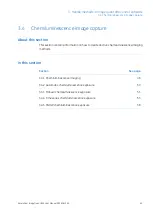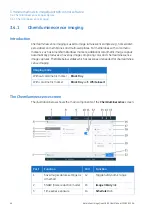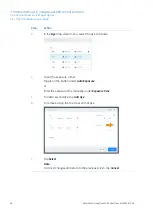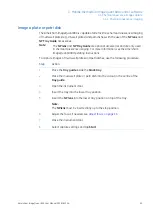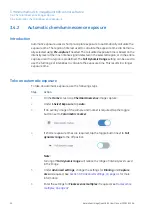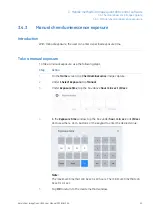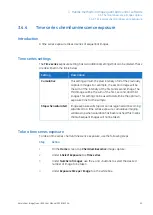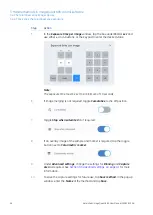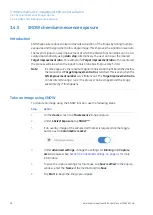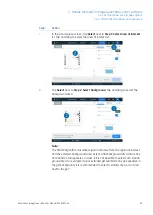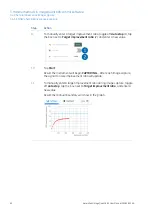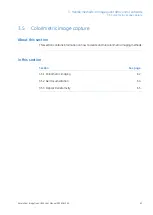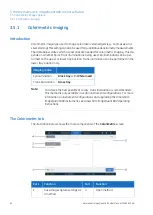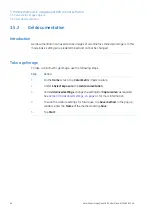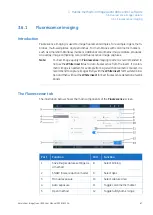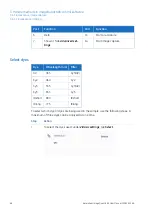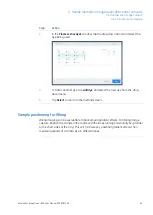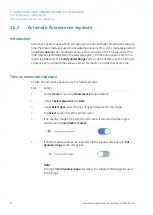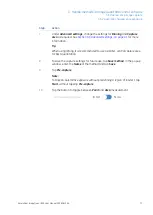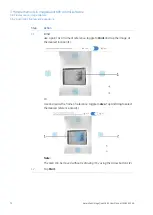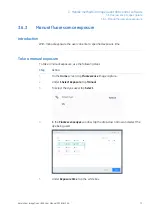
3.4.5
SNOW chemiluminescence exposure
Introduction
SNOW exposure reduces noise and avoids saturation of the image by taking multiple
exposures and merging them into a single image. This improves the signal to noise ratio.
The level of signal to noise improvement at which the SNOW function stops can be cal-
culated automatically using Auto stop. Alternatively, the user can input the desired
Target improvement ratio. For example, if a Target improvement ratio of 5.0 is entered,
the process will stop when the signal to noise ratio has improved by 5-fold.
In some exposures, the maximum signal to noise ratio might be reached before
the manually set Target improvement ratio is reached. This is seen when the
S/N improvement number curve flattens out. The Target improvement ratio
can be altered during a run or the process can be stopped and the image
saved directly if this happens.
Note:
Take an image using SNOW
To capture an image using the SNOW function, use the following steps.
Action
Step
On the Home screen, tap Fluorescence image capture.
1
Under 1.Select Exposure, tap SNOW™.
2
If an overlay image of the sample and marker is required, tap the toggle
button next to Colorimetric marker.
3
Under Advanced settings, change the settings for Binning and Capture
area as required. See
Section 3.3 Advanced settings, on page 41
for more
information.
4
To save the capture settings for future use, tap Save method. In the popup
window, enter the Name of the method and tap Save.
5
Tap Start to begin the image pre-capture
6
58
Amersham ImageQuant 800 User Manual 29383813 AA
3 Handle methods in ImageQuant 800 control software
3.4 Chemiluminescence image capture
3.4.5 SNOW chemiluminescence exposure


